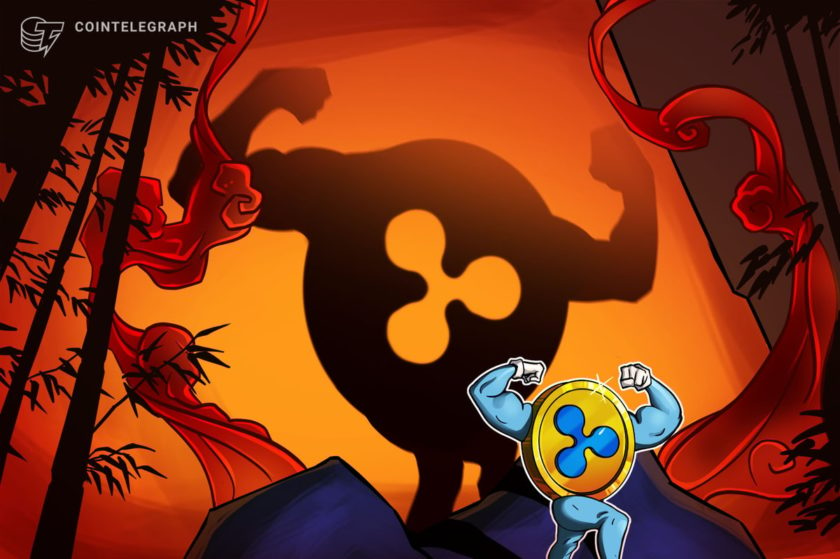2022 is coming to an end, and our staff at NewsBTC decided to launch this Crypto Holiday Special to provide some perspective on the crypto industry. We will talk with multiple guests to understand this year’s highs and lows for crypto.
In the spirit of Charles Dicken’s classic, “A Christmas Carol,” we’ll look into crypto from different angles, look at its possible trajectory for 2023 and find common ground amongst these different views of an industry that might support the future of finances.
Zhou: “It won’t be business as usual for centralized exchanges. For one, the days of commingling users and the exchanges’ assets are long gone.”
We are ending our institutional round with Wei Zhou; he worked as Chief Financial Officer for three years at the largest crypto exchange worldwide, Binance. Above the rest, this company and its current CEO, Changpeng “CZ” Zhao, heavily impacted the nascent industry and will continue to exercise influence in the coming years.
Zhou: “Bitcoin, just like the Internet, will survive any storm that comes its way; this I have no inkling of doubt about.”
Zhou reviews the biggest moment in 2022 from his unique perspective. In addition, he talks about the fundamentals that will keep crypto alive and on track to fulfill its destiny. This is what he told us:
Q: What’s the most significant difference for the crypto market today compared to Christmas 2021? Beyond the price of Bitcoin, Ethereum, and others, what changed from that moment of euphoria to today’s perpetual fear? Has there been a decline in adoption and liquidity? Are fundamentals still valid?
A: The crypto market has certainly changed a lot in the past year. There are three questions here so I’ll answer each separately:
- I think the biggest change this year has been due to the collapse of some key industry players, from Celsius and 3AC (Three Arrows Capital) to BlockFi and most recently FTX. With tens of billions wiped out directly and hundreds of billions more indirectly, investors have become cautious, and rightly so. While it has caused immense pain, the collapse of these giants has served to remind us to be ever-so diligent with our crypto investment decisions, conduct thorough research and abstain from entities whose licensing and regulatory status is unclear. I do believe that the situation will change in 2023 and that investor confidence will resume, but we can’t afford to forget the lessons learned this year.
- Liquidity – yes. Adoption – not at all. Of course with the collapse of a big market maker like FTX liquidity was affected as several exchanges relied on it. Investors have also pulled quite a bit of their money from exchanges which further escalated the liquidity crunch. However, with adoption, I believe it continues unabated. Traders may have pulled back a bit, but for those to whom crypto was much more than speculation, such as in our home market of the Philippines where play-to-earn and remittances rely on crypto, adoption will continue to surge.
- The fundamentals are still rock-solid. I like to point out that despite the chaos, Bitcoin has never been at fault. Nobody has hacked Bitcoin as a protocol, nor has it changed from being the decentralized cryptocurrency Satoshi gifted us back in 2009. Regulations are necessary to police the market stakeholders, but the fundamentals of cryptocurrencies and blockchain as a technology are still solid.
Q: What are the dominant narratives driving this change in market conditions? And what should be the narrative today? What are most people overlooking? We saw a major crypto exchange blowing up, a hedge fund thought to be untouchable, and an ecosystem that promised a financial utopia. Is Crypto still the future of finance, or should the community pursue a new vision?
Again, I’ll split the question:
- With the collapse of several firms, including some of the biggest Bitcoin miners, crypto skeptics and some mainstream media have become re-energized in their fight against crypto. Even lawmakers in the US and elsewhere are jumping onboard the “let’s fight Bitcoin” bandwagon. This, as expected, has put doubts in the minds of some investors. However, most people are overlooking that Bitcoin doesn’t need all these players to succeed. Satoshi designed it to be a decentralized electronic currency. Five years ago, there were other players and in a decade, there will be several more, but Bitcoin will still be as solid then as it was a decade ago.
- Crypto is still the future of finance. If you recall, when the dot-com bubble burst, there were all manner of questions about the viability of the Internet as a technology and the companies building on it. But look at Amazon, Facebook, Google and others today – they are defining the world we live in. This is because, despite the shakeups with the market players, the underlying technology was fundamentally transformative. Bitcoin, just like the Internet, will survive any storm that comes its way; this I have no inkling of doubt about.
Q: If you must choose one, what do you think was a significant moment for crypto in 2022? And will the industry feel its consequences across 2023? Where do you see the industry next Christmas? Will it survive this winter? Mainstream is once again declaring the death of the industry. Will they finally get it right?
A:
- It’s difficult to choose just one moment to capture what has been crypto’s most eventful year yet. However, since I come from the exchange side, I would point to the FTX collapse as a landmark moment. Its impact has been and will continue to be felt in the industry. It will mainly affect the industry in two ways:
- It has made investors become keener about who they trust with their assets and how these custodians store the assets. Gone are the days when creating a wallet and cruising by was enough. Investors are now deeply exploring self-custody solutions, which contrary to opinion I think is a great direction to take. When they require to trade their assets, they are now keen to only work with exchanges that are fully regulated like Coins.ph which is licensed by the Philippines central bank and is regularly audited by the apex bank.
- It has made regulators more concerned about the industry. We’ve already seen countries like Japan, South Korea and more moving to better regulate the industry to prevent another FTX debacle. We as the crypto industry must be willing and ready to embrace regulations if we are to weather the storm and become a mainstream industry.
- We will survive this winter definitely. We’ve gone through worse – remember when Bitcoin sunk all the way down to $3,000? As a bonus, we now have institutional investors who are advancing the sector, unlike during prior winters. But I think the biggest reason we will survive the winter is that there are now many more use cases than there were in the past. Remittances, play-to-earn gaming, NFTs, Web3, the metaverse – all these have shot into prominence in recent times and they are all powered by crypto and blockchain.
Q: What’s next for exchanges such as Binance in 2023 and beyond? Do you think the recent events with FTX will jeopardize the future of these platforms? Many are already speculating about the shift in liquidity from Centralize to Decentralize Exchanges (DEX) due to the users’ lack of confidence in the former
A:
- It won’t be business as usual for centralized exchanges. For one, the days of commingling users and the exchanges’ assets are long gone. FTX has woken up the entire industry to the dangers this practice, which is illegal in traditional finance, can have. Proof of reserves is already becoming a big trend as more investors ask questions about how and where their assets are stored.
- Regulators are also cracking down much harder on exchanges. In the Philippines, for instance, the BSP was quick to audit exchanges to probe if they had been exposed to the FTX contagion and thankfully, neither Coins.ph nor our peers were exposed to FTX.
- There will be more focus on decentralized exchanges, and much more so on self-custody. More users are now exploring wallets that give them full ownership of their crypto – after all, not your keys, not your coins. I am a big supporter of self-custody for those with the technical ability to do it successfully. When they require to trade, I would advise them to always use an exchange that’s licensed and supervised by a recognized national or regional watchdog.
It’s truly unfortunate what has happened this year. Crypto was meant to be a tool to liberate people and give them new opportunities in finance and beyond. This year has shown the worst of crypto, and I sympathize with every investor whose money has been held up or wiped out in the crypto contagion.
However, as we march ahead in 2023 and beyond, I believe and hope that crypto will weather the storm and emerge even stronger. The vision Satoshi had was financial liberation for the billions who’ve been marginalized for decades, and despite all the hurdles and setbacks, I believe we’re still on course to achieve this vision.



